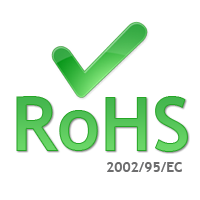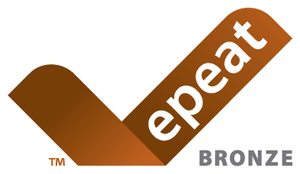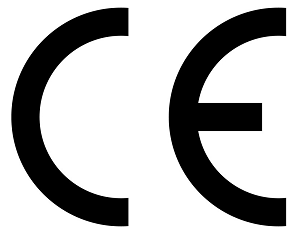RoHS stands for Restriction of Hazardous Substances. RoHS, also known as Directive 2002/95/EC, originated in the European Union and restricts the use of specific hazardous materials found in electrical and electronic products (known as EEE). All applicable products in the EU market after July 1, 2006 must pass RoHS compliance. The substances banned under RoHS are lead (Pb), mercury (Hg), cadmium (Cd), hexavalent chromium (CrVI), polybrominated biphenyls (PBB), polybrominated diphenyl ethers (PBDE), and four different phthalates (DEHP, BBP, BBP, DIBP).
The Electronic Product Environmental Assessment Tool (EPEAT) is a global ecolabel for the IT sector. The EPEAT program provides independent verification of manufacturers’ claims and the EPEAT online Registry lists sustainable products from a broader range of manufacturers than any comparable ecolabel. National governments, including the United States, and thousands of private and public institutional purchasers around the world use EPEAT as part of their sustainable procurement decisions. EPEAT helps purchasers, manufacturers, resellers, and others buy and sell environmentally preferable electronic products. EPEAT-registered products must meet environmental performance criteria that address: materials selection, supply chain greenhouse gas emissions reduction, design for circularity and product longevity, energy conservation, end-of-life management and corporate performance. Bronze-rated products meet all of the required criteria in their category. Silver-rated products meet all of the required criteria and at least 50% of the optional criteria, while Gold-rated products meet all of the required criteria and at least 75% of the optional criteria.
The letters ‘CE’ appear on many products traded on the extended Single Market in the European Economic Area (EEA). They signify that products sold in the EEA have been assessed to meet high safety, health, and environmental protection requirements. When you buy a new phone, a teddy bear, or a TV within the EEA, you can find the CE mark on them. CE marking also supports fair competition by holding all companies accountable to the same rules. CE marking is a part of the EU’s harmonisation legislation, which is mainly managed by Directorate-General for Internal market, Industry, Entrepreneurship and SMEs. The CE marking for Restriction of Hazardous Substances is managed by Directorate-General for Environment. Comprehensive guidance on the implementation of EU product rules can be found in the so-called Blue Guide.



















